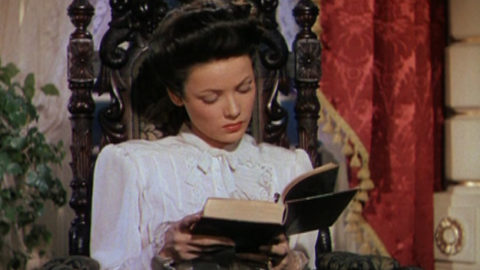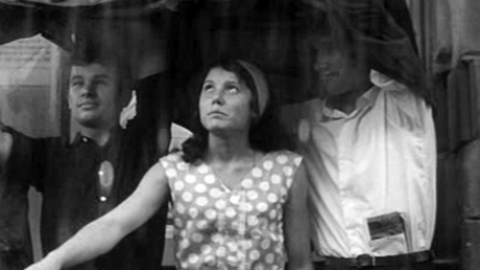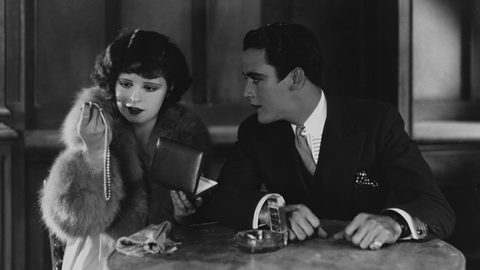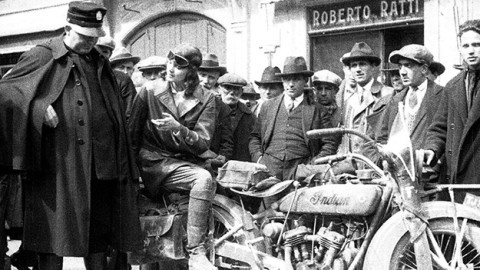Choosing The National Film Registry
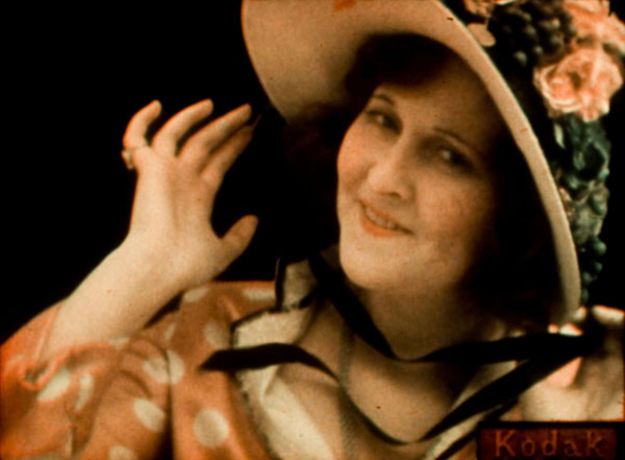
Kodachrome Color Motion Picture Tests
Every October, the National Film Preservation Board (NFPB) meets in Washington, D.C., to help determine which 25 titles will be added to the National Film Registry. The new titles are generally announced in mid-December. Each year’s additions result in a wave of publicity focused predominantly on two or three familiar Hollywood titles. Shorts, experimental films, and documentaries are often treated as also-rans, if they are mentioned at all.
The additions also provoke criticism from fans whose favorite movies somehow weren’t named. But how are the titles actually selected? And why was your favorite overlooked?
Formed in 1988, the National Film Registry is the government’s official list of movies deemed “culturally, historically, or aesthetically significant.” Titles are selected to the Registry on the basis of public voting and recommendations from the NFPB. While the public is encouraged to nominate movies (up to 50 titles per person), relatively speaking almost no one does. For 2014, only 2000 nominations, representing 3500 movies, were tallied. That gives the 44 NFPB members considerable sway over the eventual selections.
According to Matthew Bernstein, the Department Chair of Film & Media Studies at the Emory College of Arts and Sciences, members submit a first round of nominations in early fall. Workers at the Library of Congress tabulate the results, sorting titles by number of votes received and by genre. Public votes are added into the results. In the past, these preliminary ballots could include some 200 to 300 movies. This year about 400 titles are under consideration.
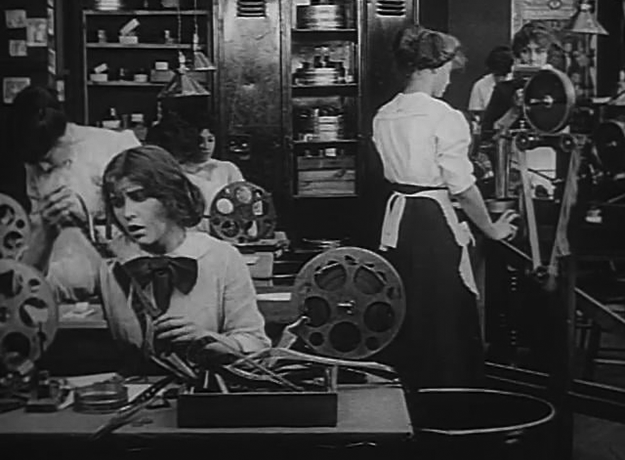
The Evidence of the Film
At the meeting in Washington, a day-long affair, the first session is devoted to preservation issues. The next step is what Dan Streible, Associate Professor and Director of the Moving Image Archiving and Preservation program in the Department of Cinema Studies at New York University, calls a “freewheeling” discussion about potential titles. “Anyone can speak up,” he said.
During the Registry’s early years, the selections were often obvious choices: Hollywood blockbusters, famous newsreels and documentaries, well-known cartoons and shorts. Heavyweights like William Wyler, John Ford, and Frank Capra alternated with recognized masters of animation, silents, and experimental films.
“I came on the board seven or eight years ago,” Bernstein said. “I looked at what was already on the Registry and thought, okay, my predecessors have done a great job. At the time [Librarian of Congress] Dr. James Billington said that we don’t just want Hollywood mainstream movies like Casablanca. We needed to diversify. We needed more documentaries, animated films, experimental films, home movies.”
“Diversity is the key word,” Streible said. “Over the first 15 years or so it was obvious that plenty of feature films needed to be on the list because of their artistic power, achievement, impact, popularity. But recently there have been more and more orphan titles, more obscure movies, more diversity in time periods, subject matter, and genre.”

A Computer Animated Hand
Some recent additions to the Registry, like A Computer Animated Hand (1972) and Kodachrome Color Motion Picture Tests (1922), were never even meant to be seen by the public. Bert Williams: Lime Kiln Club Field Day (1913) consists of dailies from a feature film that was never completed, let alone screened. And the Nicholas Brothers Family Home Movies (1930s-40s) were obviously meant for private viewing.
Some of these titles are recommended to the board by study groups that concentrate on experimental films, orphan movies, and in recent years student films (such as Martin Brest’s Hot Dogs for Gauguin from 1972). The study groups deliver presentations that include background material and clips.
In fact, presentations are crucial for obscure titles. They can range from simply reading excerpts from an article, to what Bruce Goldstein, director of repertory programming at New York’s Film Forum, described as a “hard sell.”
The Evidence of the Film (1913), a Thanhouser drama, was selected to the Registry back in 2001. In 2011, Ned Thanhouser, grandson of studio founder Edwin Thanhouser, offered up The Cry of the Children, a 1912 film, submitting a joint proposal with Ed Stratmann of the George Eastman House, which held the best material of the film. The proposal included a synopsis, publicity materials, and a Vimeo link to the movie. The Cry of the Children was named to the Registry in 2012.
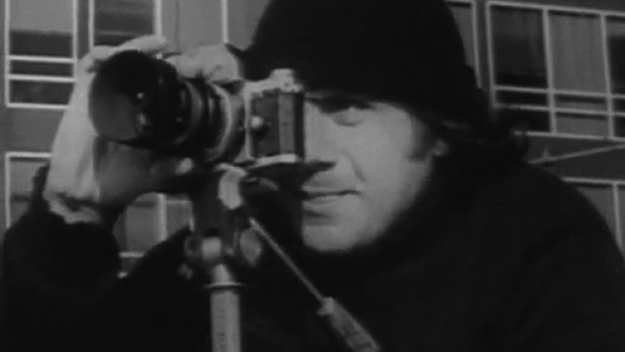
Hot Dogs for Gauguin
“Some meetings have formal screening periods, two hours where we just watch films,” Streible said. “More often it’s a process where someone says, ‘I want to nominate this film,’ and then they have a clip cued up on a DVD or QuickTime movie to show a few minutes’ sample, to introduce people to unfamiliar films and make a case for them.”
“Generally the members are not really critical,” Bernstein said. “There’s a lot of respect around the table. In the give-and-take, in the conversation, it’s rare for someone to say, ‘No, not that film.’”
“We might mention by name a hundred titles during the day,” Streible said. “Someone might say, ‘Let’s look at Westerns, these are the top two vote-getters.’ Some titles get mentioned, put on the table verbally, but are not really discussed at length.”
None of the members I spoke to completely discounted the influence of public voting.
“We look at the public nominations to see what’s going on,” Bernstein said, “although sometimes it’s clear there’s a campaign behind a title.” Hoosiers is often cited as a selection influenced by public votes, especially those by hundreds of Indiana schoolchildren. “I think Back to the Future was definitely a public write-in vote,” Streible said, adding: “It was an obvious time to pick that one.”
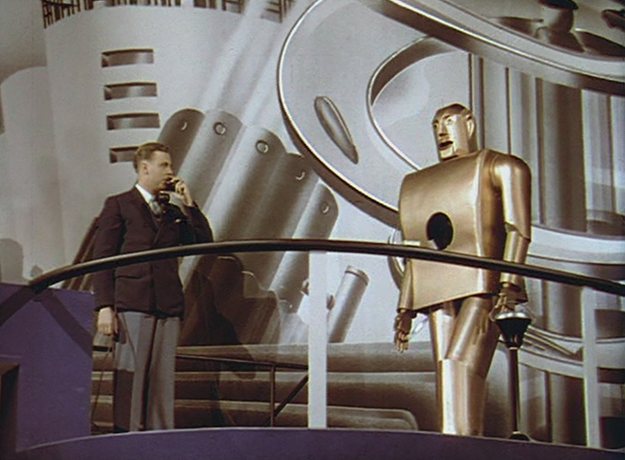
The Middleton Family at the New York World’s Fair
Board members represent a cross section of constituents from industry, archival and academic organizations. Some nominations are backed by outside institutions, reflecting a wider range of voices. In Bernstein’s case, he also speaks for the Society for Cinema & Media Studies, with members in 38 nations.
Wendy Shay, an audiovisual archivist at the Archives Center, National Museum of American History, Smithsonian Institution, is one of two representatives for The Association of Moving Image Archivists (AMIA).
“I compile the titles and support statements into a report for the members of the board to review,” she wrote in an e-mail. “Frankly, I didn’t get a huge response in the beginning, but it has grown each year; this year we received 10 nominations. Several AMIA recommendations have been selected, including The Middleton Family at the New York World’s Fair [39] and Felicia [65]. I have done a few ‘hard sells’ for films. I have been pushing The Story of Menstruation for the last two years. Jane Fonda Workout has been suggested by one AMIA member for several years, and I’ve made a strong pitch for that one as a transformative home video.”
But a public campaign or a well-researched presentation won’t guarantee that a title will be selected. Andy Uhrich, who is on the board of both the Center for Home Movies and the Northwest Chicago Film Society, campaigned for 35mm Projector Alignment and Image Quality Test Film (Society of Motion Picture and Television Engineers, 1971/1995), without success so far, despite that fact that it is “one of the most common and most regularly projected American films of the last 40 years.”
Like the Baseball Hall of Fame ballots, certain titles percolate under the surface without ever garnering enough support to be added to the Registry. The final tallies, ranked by the Library staff according to vote totals, are distributed to board members after the meeting. They then weigh their choices from most to least recommended, and submit their 25 final recommendations to the Library two or three weeks later.
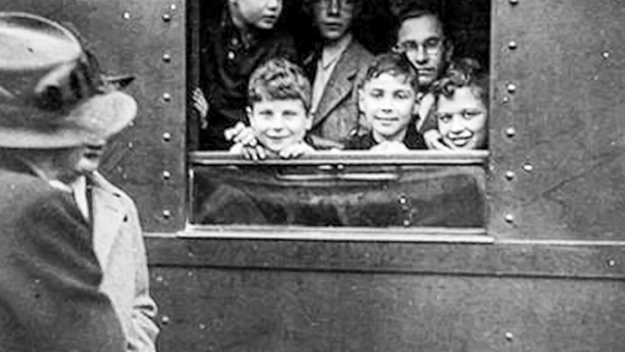
Into the Arms of Strangers: Stories of the Kindertransport
“It’s a closed-door process after that,” Streible said. “The staff pulls all the ballots together, the Librarian has a meeting with them. And then he makes the selections himself.”
By law, the Librarian names the titles each year to the Registry. This became a source of frustration for some board members.
“Some titles get nominated immediately,” Bernstein noted. “Into the Arms of Strangers: Stories of the Kindertransport [2000] got approved last year, that was the first year that I can recall it came up. But Roger & Me [89] had been on the list for quite a while before it eventually made it.”
Some members noted a dearth of LGBT-themed films and filmmakers on the Registry. The selection of Eaux d’Artifice and The Life and Times of Harvey Milk has helped change that perception. Others complained, off the record, that Dr. Billington wasn’t a “film person.”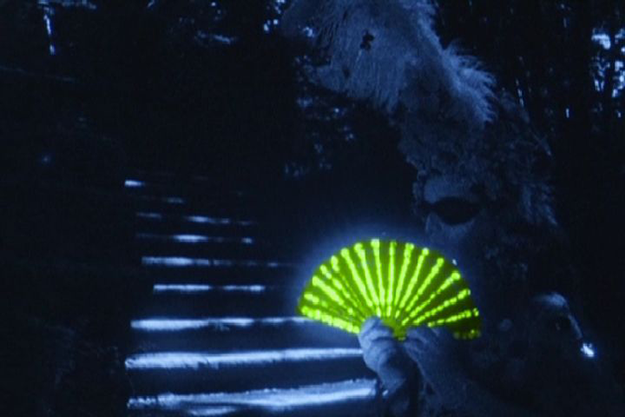
Eaux d’Artifice
But as Bernstein noted: “Dr. Billington is a Russian cultural historian. He certainly knows a lot about Russian films. My understanding is that he warmed up to this task of choosing the films and getting into the films really, really enthusiastically. It will be interesting to see the changing of the guard when he isn’t the decider anymore, what that dynamic becomes.”
In June, Dr. Billington announced his retirement, effective September 30. The current Acting Librarian of Congress is David Mao, a law librarian. Asked in an interview in The GW Hatchet how long he will serve, Mao answered: “Your guess is as good as mine.”
Currently filmmakers whose work is selected to the Registry don’t receive any actual honors. “Although they are entitled to use an official animated logo Saul Bass designed for the Library,” Streible noted. Nor does selection guarantee that a title has been or will be preserved.
“I’d say 99 percent of the press headlines suggest that because the Librarian named this title to the Registry, it means it will now be preserved,” Streible continued. “But to say it’s on the Registry and merits preservation doesn’t mean there’s any mechanism to fund work on a given film. In truth, it might take years before some titles are be preserved.”

The Story of Menstruation
But as Steven Leggett, liaison specialist and program coordinator at the National Film Preservation Board, pointed out in an e-mail, selection to the Registry is “a strong impetus for archives, foundations and studios to work together toward that goal.”
The Library releases its selections in mid-December, right before end-of-year “best of” lists are compiled. We’ll add this year’s titles as soon as they are announced. Public nominations for the 2016 Registry are currently open. Now is the time to start working on your presentations.
ANNOTATED LIST OF THE 2015 SELECTIONS
Being There (1979)
Jerzy Kosinski helped adapt his novel, directed with cold simplicity by Hal Ashby. Chance, a gardener raised in isolation and educated by television, was Peter Sellers’s penultimate role, and one of his best performances. Melvyn Douglas won a Best Supporting Actor Oscar as a billionaire who supports Chance.
Black and Tan (1929)
Dudley Murphy’s follow-up to St. Louis Blues (also on the Registry) was this musical short starring Duke Ellington and Fredi Washington. Ellington performs three songs with his orchestra, which included Johnny Hodges, Cootie Williams, and Joe Nanton. Murphy would later direct The Emperor Jones, another Registry title.
Dracula (Spanish-language version) (1931)
Director George Melford shot this film at night, on the same Universal soundstages Tod Browning used during the day. Some horror fans think this is better than Browning’s version with Bela Lugosi; at 20 minutes longer, it certainly is paced differently.
Dream of a Rarebit Fiend (1906)
A six-minute special-effects joy ride, this is one of the more hallucinogenic and amusing films from the period. Based on Winsor McCay’s comic strip of the same name, although film historian Charles Musser points out that it also borrows the plot and some of the visuals from Rêve à la lune, a 1905 Pathé film by Gaston Velle. Edwin S. Porter—at the time one of the industry’s top directors—took eight weeks to shoot the film (with Wallace McCutcheon).
Eadweard Muybridge, Zoopraxographer (1975)
Muybridge pioneered the study of motion in photography. Film essayist Thom Andersen (Los Angeles Plays Itself) spent 10 years constructing this documentary about him, re-animating examples of Muybridge’s work.
Edison Kinetoscopic Record of a Sneeze (1894)
The earliest surviving film to be copyrighted, often referred to as Fred Ott’s Sneeze, this 21-second short defined early motion pictures almost as much as The May Irwin Kiss. Like Kiss it was the subject of a barrage of publicity, including an article in Harper’s. Ott was an Edison employee. Produced by W.K.-L. Laurie and shot by William Heise.
A Fool There Was (1915)
Before flappers came vamps, and no one is more closely identified with the role than Theda Bara, whose screen name was an anagram for “Arab Death.” Originally Theodosia Burr Goodman, she starred in some forty features. This is one of two that survive from her prime period.
Ghostbusters (1984)
With Paul Feig’s reboot currently in production, it can’t hurt to publicize Ivan Reitman’s original version, or to lament once again the loss of Harold Ramis. Written by Ramis and Dan Aykroyd, produced and directed by Ivan Reitman, it led to a so-so sequel and fruitless, decades-long efforts to involve star Bill Murray in another episode.
Hail the Conquering Hero (1944)
Preston Sturges wrote and directed this WWII comedy during a remarkable creative streak that included Sullivan’s Travels and The Miracle of Morgan’s Creek, both Registry selections. (You can see a billboard for Creek in the closing shots of this film.) A double-barreled attack on motherhood and patriotism, Hero features another bumbling turn by Eddie Bracken as a hapless 4-F reject, as well as astounding work by Sturges’s repertory troupe. With a higher message-to-gag ratio than his other films, Hero is notable for turns by irascible sergeant William Demarest, pompous mayor Raymond Walburn, and battle-scarred vet Freddie Steele.
Humoresque (1920)
One of two Fannie Hurst titles selected this year, Humoresque was also the basis of a 1946 weepie starring Joan Crawford and John Garfield. Love and sacrifice were the hallmarks of director Frank Borzage’s best films (his 7th Heaven is also on the Registry). During his time one of the most admired directors in movies, he is a master manipulator and an unabashed sentimentalist.
Imitation of Life (1959)
A 1934 adaptation of Fannie Hurst’s novel directed by John Stahl is already on the Registry. This version, directed by Douglas Sirk, ups the emotional ante and the heightened decor as diva Lana Turner and daughter Sandra Dee battle each other over handsome stranger John Gavin. Another plot follows Susan Kohner, daughter of single mom Juanita Hall, as she tries to pass for white.
The Inner World of Aphasia (1968)
This educational film, used in training courses, shows the Registry’s efforts to expand its list to include “orphan” works. Co-directed by star Naomi Feil, who also co-produced with her husband Edward Feil.
John Henry and the Inky-Poo (1946)
The penultimate Puppetoon is seen by some as George Pal’s attempt to atone for the racism of his Jasper cartoons. (Pal’s stop-motion cartoon Tulips Shall Grow is also on the Registry.) John Henry ranks with Paul Bunyan as a hero of American folklore.
L.A. Confidential (1997)
Based on James Ellroy’s novel, this sprawling film noir set in post-war Los Angeles marked turning points in the careers of Russell Crowe and Guy Pearce. Directed by Curtis Hanson, who shared an Oscar with co-writer Brian Helgeland for Best Adapted Screenplay. Kim Basinger also won an Oscar playing a prostitute who looks like Veronica Lake.
The Mark of Zorro (1920)
The biggest action star of his period, Douglas Fairbanks was also an unusually astute judge of material. After reading the pulp serial The Curse of Capistrano on a train ride, he purchased the screen rights from author Johnston McCulley, convinced him to rename it The Mark of Zorro, and turned it into a funny and thrilling blockbuster.
The Old Mill (1937)
One of two Walt Disney titles selected this year, The Old Mill won two Oscars. Disney halted production of the original cartoon to reshoot it with a new multiplane camera that brought an illusion of depth to the screen. It helped pave the way for features like Snow White and Bambi.
Our Daily Bread (1934)
Director King Vidor had to use his own money to finance Our Daily Bread, a melodrama about a farming commune, evil capitalists, and a crop-killing drought. The results manage to offend both liberals and conservatives, and turn Vidor back to more mainstream projects. Perhaps because the title fell into the public domain, the climactic montage became a favorite in film classes during the 1960s.
Portrait of Jason (1967)
Shirley Clarke’s character study of a gay hustler, a blend of fact and fiction, was thought lost until a 16mm copy was discovered at the Wisconsin Center for Film and Theater Research. As Dennis Doros, co-founder of Milestone Film & Video, writes: “Milestone is 100 per cent thrilled and very proud that Portrait of Jason has been recognized by the Library of Congress and its National Film Registry. This is Shirley’s second film to be named to the Registry, and to us, this confirms her place as a major director in American cinema history. A lot of the credit is also due Jason Holliday (Aaron Payne) who was undeniably and enormously brave to tell his story of being a black gay man in America, three years before Stonewall and at a time when it was still illegal to be a homosexual in the United States. If he were alive today and heard the news, I think he would say what he said in the film: ‘I’m the Bitch! Believe it.'”
Seconds (1966)
Unhappy with his job, New York corporate executive Rock Hudson wants a new chance in life. What he uncovers is the kind of creepy conspiracy that used to drive every other episode of The Twilight Zone. Directed by John Frankenheimer, Seconds had a screenplay by Lewis John Carlino (based on a novel by David Ely) and cinematography by James Wong Howe. It also gave second chances to blacklisted actors like Will Geer and Jeff Corey.
The Shawshank Redemption (1994)
Frank Darabont’s adaptation of the Stephen King novella Rita Hayworth and Shawshank Redemption appears so regularly on cable television that it has built a following it never found in movie theaters. Pushing big themes like perseverance, loyalty, and redemption, it gave pivotal roles to Tim Robbins and Morgan Freeman.
Sink or Swim (1990)
A leading voice in queer cinema, Su Friedrich has been making movies and videos since 1978’s Hot Water. Sink or Swim examines a young girl through 26 vignettes about her family, father, and childhood. Friedrich mixes fiction and documentary, home movies and found footage, to build an impressionistic world.
The Story of Menstruation (1946)
After bruising labor battles and a market reduced by World War II, to say nothing of extravagant, big-budget productions like Fantasia, Walt Disney faced serious financial problems. When armed forces money dried up in peacetime, sponsored films were essential to his studio.
A mainstay of high school health classes, this ten-minute cartoon was commissioned by International Cello-Cotton Company (now Kimberly-Clark).
Wendy Shay, who campaigned vigorously for the film, writes this: “As delighted—and surprised—as I am that the film was selected, I’m not sure I can add anything articulate to the really fine description that was issued with the selection. I really never thought a film with the word menstruation in the title would make the list. I hope that both females and males will take a look at this classic, historically valuable sponsored educational film. Now several generations of boys will know what was going on when they were sent out of the classroom.”
Symbiopsychotaxiplasm: Take One (1968)
Rescued from oblivion when it was discovered by a Brooklyn Museum curator, this one-of-a-kind, communally filmed experiment was largely the work of William Greaves, the producer of Black Journal on public television. With a score by Miles Davis and a champion in actor Steve Buscemi.
Top Gun (1986)
Tom Cruise went from teen dream to full-fledged star in Tony Scott’s Air Force recruitment film. Produced by Don Simpson and Jerry Bruckheimer, Top Gun married power ballads and arena anthems to Hollywood’s oldest plot lines. Scott used techniques perfected while making television commercials to sell hokum to a new generation. While the movie helped power the cast to lucrative careers on screens big and small, Cruise is the last one standing.
Winchester ’73 (1950)
One of the richest collaborations in the Western genre started when James Stewart teamed with Anthony Mann in Winchester ’73. Structured in episodes, the movie details Stewart’s obsessive pursuit of the rifle stolen during a sharpshooting match. Written in part by Western master Borden Chase, shot by Garbo cinematographer William H. Daniels, and with a cast that included Dan Duryea, Shelley Winters, Will Geer, and Stephen McNally, Winchester ’73 was a sleeper hit that influenced subsequent Westerns. Stewart’s percentage deal to make the movie was also a turning point in how films were financed.



